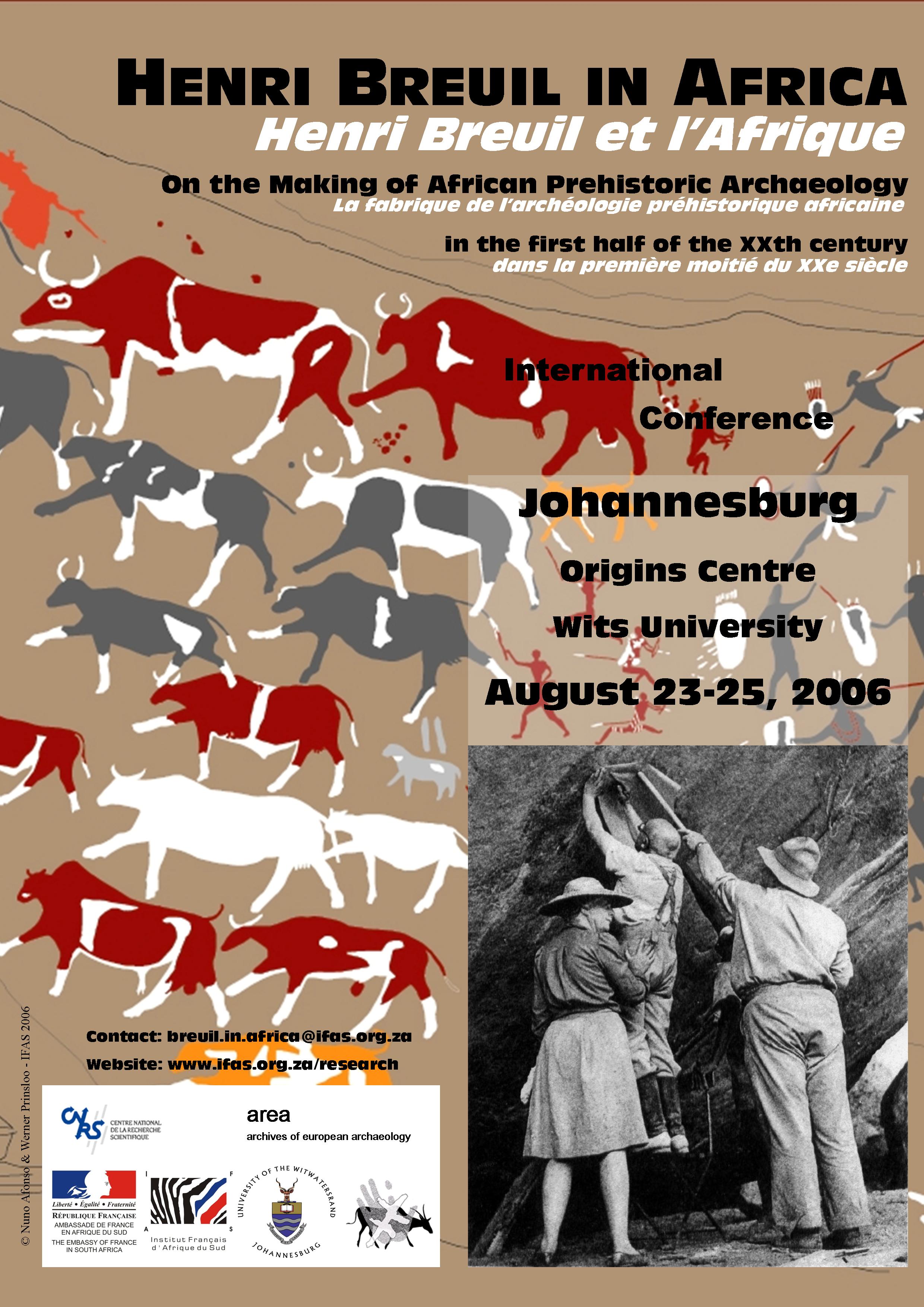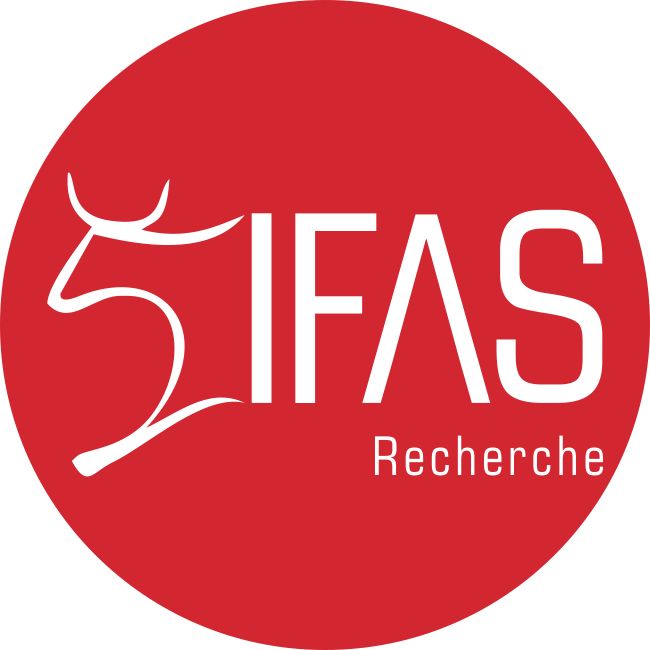Henri Breuil in Africa
On the making of African prehistoric archaeology in the first half of the XXth century
 23-25 August 2006
23-25 August 2006
Origins Centre, Johannesburg
The international conference on “Henri Breuil in Africa – On the Making of African Prehistoric Archaeology in the First Half of the 20th century » took place from the 23rd to the 25th of August 2006 at the Origins Centre of the University of the Witwatersrand in Johannesburg. The conference was co-ordinated by François-Xavier Fauvelle-Aymar (CNRS; French Institute of South Africa, Johannesburg), Nathan Schlanger (AREA, Paris; INRAP, Paris) and Benjamin Smith (Rock Art Research Institute, University of the Witwatersrand, Johannesburg). A multi-facetted personality, Abbé Henri Breuil (1877-1961) marked the history of world Prehistory.
Throughout the first half of the twentieth century, Breuil tirelessly travelled through Western and Eastern Europe, as well as the Far East, but from early on his interests clearly focussed on the African continent. Breuil’s contribution to African Archaeology includes not only several dozen scientific publications, but also crucial institutional inputs bearing on the organisation of research, legislation, surveys, international conferences, etc. In this light, Abbé Breuil remains, to this day still, a symbolic figure of Rock Art et Lithic Industries Studies, in Africa as much as Europe. The conference developed over three thematic days and presented a critical examination of the “African” Breuil, making it possible to document the range and scope of his many scientific activities, but also to offer a better understanding of the institutional and epistemological fabric of African Prehistoric Archaeology in general. The first day of the conference focused on placing Henri Breuil in the colonial contexts of the time and confirmed the importance of his role in the history of Sciences in Africa and Europe, serving as a metropolitan science emissary as well as an ally of the main political and scientific actors in Africa. Breuil’s archaeological activities in Africa (the Horn of Africa, the Sahara, Central Africa) were tackled during the second day of the conference, making it possible to attest that even if some of his records, which he completed and sometimes reworked, are today considered as interpretative reproductions, he did contribute to the discovery and appreciation of this art form that was for a long time unknown. Breuil’s journeys are an opportunity to refine his arguments concerning the compatibility between religious beliefs and prehistoric archaeological findings. While Abbé Breuil was questioned on several occasions by believers from various denominations, he seemed to express himself more openly in this regard in Africa than in France. Abbé Breuil’s specific contributions to South African Archaeology, in terms of practice, interpretations and institutional inputs, were debated during the last day of the conference. The need to consolidate and cross-reference the various archives and documents left by Breuil in France and South Africa was pointed out by several participants. Finally, an analysis of the autobiographical account he wrote on his first South African trip (1929), was complemented with the projection of a documentary film (dating from the 1950s) – with, in conclusion, a few personal memories by Phillip Tobias on Abbé Breuil. The conference ended with an excursion at the rock painting archaeological site of Bosworth, near Klerksdorp. The visit was led by Ben Smith, Director of the RARI and Sven Ouzman of the University of Pretoria.
